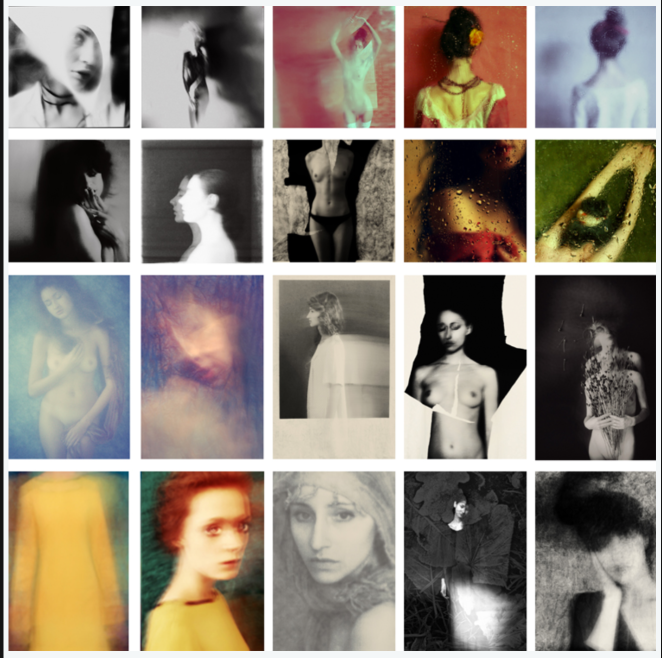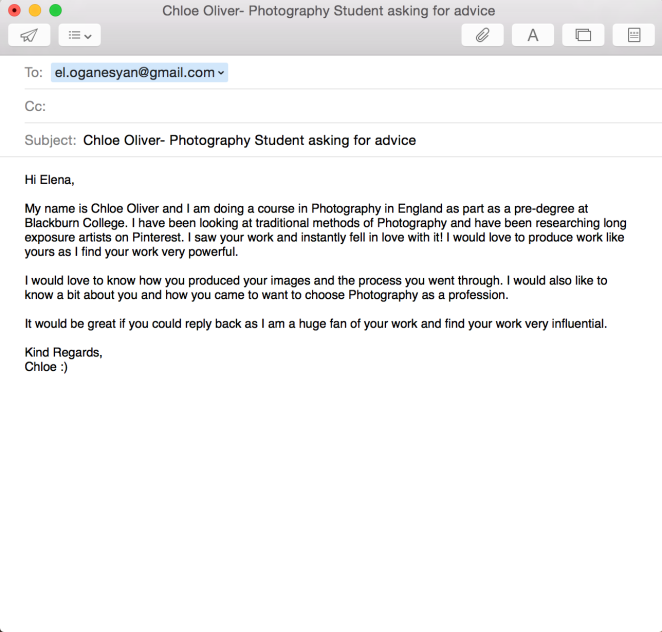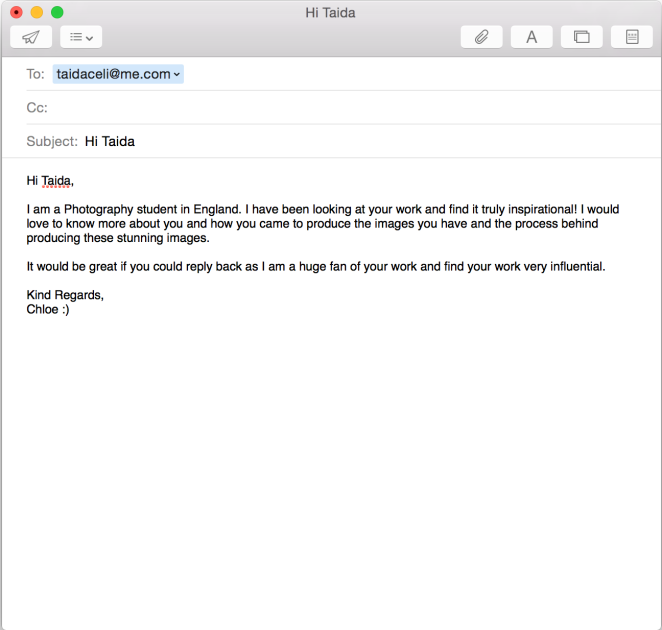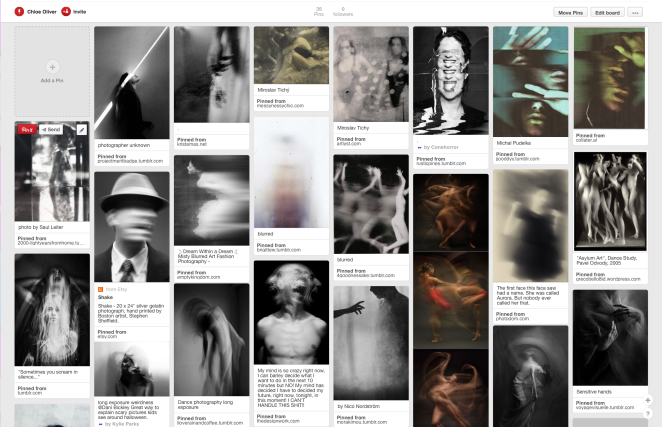Screenshots taken from Pitch Powerpoint
This slideshow requires JavaScript.


I was looking on Pinterest for artist influence and came across this artist; Elena Oganesyan whose work I instantly fell in love with. I wanted to experiment with traditional photography and create abstract pieces of photography. When I saw her images, I knew exactly what I wanted to do. I chose the concept of femininity and what people view femininity as, which I would portray in my experimental images.
I went onto a website called http://www.artlimited.net/4693?tabid=0 which showed Elena’s work with her personal details on which people could contact her on with any queries.

I decided to contact Elena on her gmail account as there isn’t much information about Elena and her artwork. I sent her an email asking her about the processes she uses to produce her work and asked about why she chose photography as a profession.

Now I am just waiting for a reply from her.
I have also found her site which gives me more images that I can take influence from; https://500px.com/elena_oganesyan










































































































